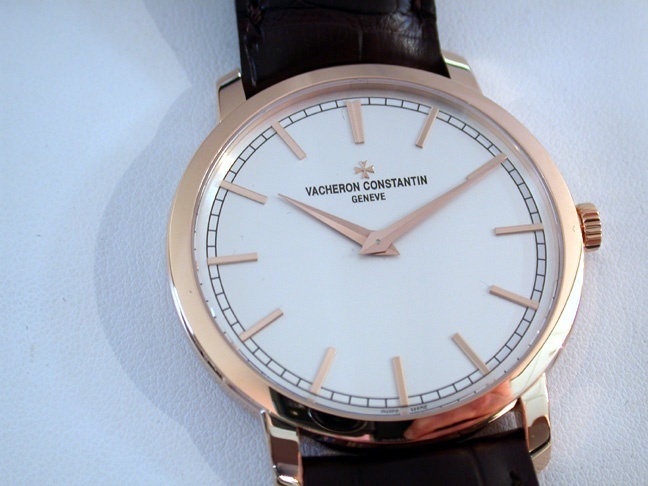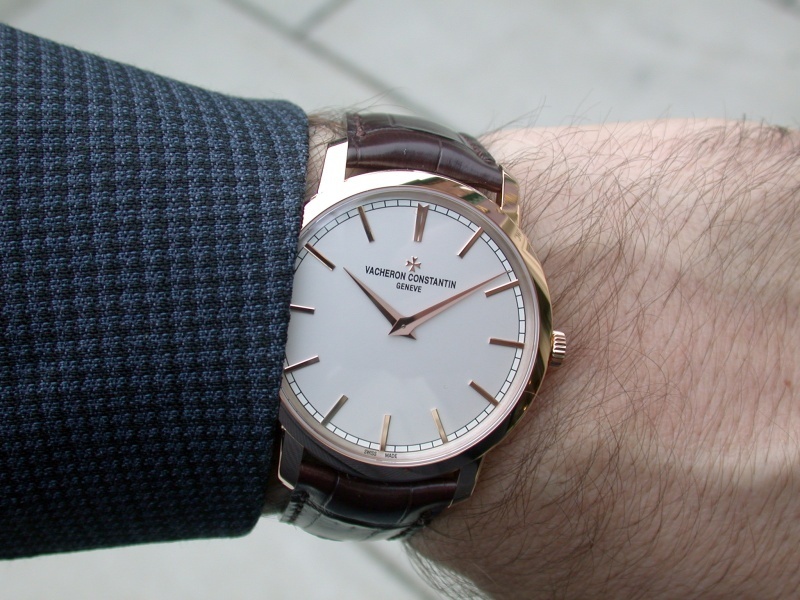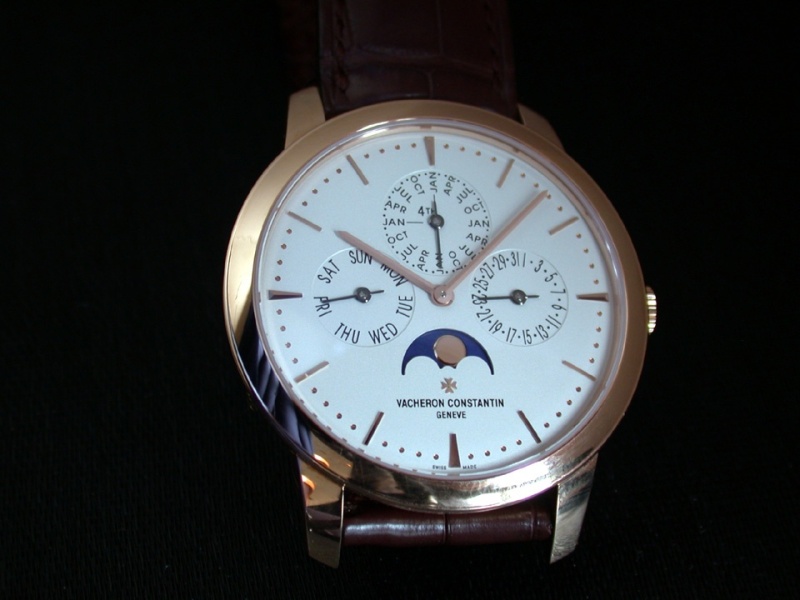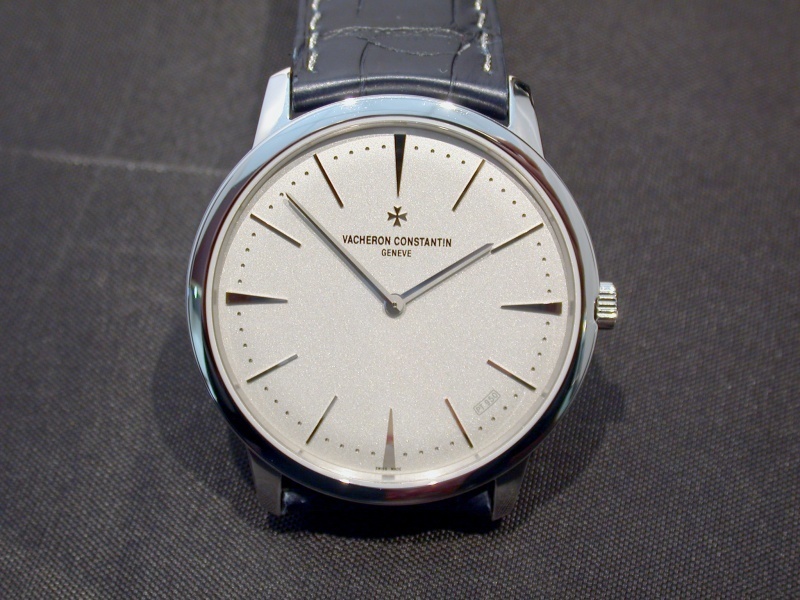
WHL
[VC Moderator]
4922

Review: Vacheron Constantin Patrimony Traditionnelle Self-Winding
Vacheron Constantin has the practice of announcing and releasing new watches separate from SIHH, which takes place every January. A highlight of their 2012 novelties was the Patrimony Traditionnelle Self-Winding, reference 43075/000R-9737, which was introduced in October, 2012.

The Patrimony Traditionnelle collection consists of a broad range of watches, from high complications like the Calibre 2755 ( with Perpetual Calendar, Minute Repeater, Tourbillon) to the mid-complications (World Time and Chronograph), to the simple, like this watch and the base Patrimony Traditionnelle with manual winding calibre 4400. All are united by the round case shape, with lateral step which extends to the lugs, and with knurling on the case back:

Dials are distinguished by Dauphine hands with a mix of frosted and polished surfaces for easy legibility, opaline finish with applied hour markers, and minute track in a differing hue.
The dimensions of the Patrimony Traditionnelle Self-Winding are a 41 mm diameter with a slim 7 mm height, giving the watch a low profile on the wrist:

This slimness is due to the ultra thin automatic calibre 1120 that powers the watch.

The 1120 is a legendary calibre that Jaeger LeCoultre developed for the exclusive use of Vacheron Constantin and Audemars Piguet (with Patek Philippe using the movement briefly in the early 1970’s). With a thickness of 2.45 mm it was the thinnest automatic movement in production, and it continues to this day to be a wonderful engine for complications, having powered the Mercator, Heure Sautante, Saltarello, and Perpetual Calendar watches.
The 1120 was originally designed to use a free-sprung Gyromax balance, and VC employed it this way for many years, but in the 1980’s and 1990’s, the brand got away from this and used a microscrew regulator to adjust the timekeeping, a less elegant, but economical, solution.
At SIHH 2010, Vacheron Constantin reintroduced the Gyromax balance in the 1120 for the Historiques 1968, though the movement remained hidden behind a solid case back. In 2011, Vacheron Constantin introduced the Patrimony Contemporaine Perpetual Calendar:

and the Patrimony Contemporaine Self-Winding Excellence Platine:

both of which use the 1120. The Patrimony Traditionnelle continues this redeployment of the 1120 in Vacheron Constantin watches. The openworked rotor, with Maltese Cross decoration, is both beautiful and always allows for a full view of the architecture of this classic movement. Vacheron Constantin proudly proclaims that the movement is stamped with the Hallmark of Geneva.

With the Patrimony Traditionnelle Self-Winding and also the manual winding Patrimony Contemporaine, Vacheron Constantin has cornered the market on elegant two-hand watches that fulfill today’s watch collectors preference for watches 38 mm and larger. Any flaws in design and execution of the case and dial are amplified when looking at the minimalistic display of simply the hours and minutes. These watches are flawless. That Vacheron Constantin has succeeded superlatively well with these two models is a testament to their excellence in paying attention to all the details that go into making a fine watch. Bravo!
Bill Lind
VC Forum Moderator
More posts:

Review: Vacheron Constantin Patrimony Traditionnelle Self-Winding
Vacheron Constantin has the practice of announcing and releasing new watches separate from SIHH, which takes place every January. A highlight of their 2012 novelties was the Patrimony Traditionnelle Self-Winding, reference 43075/000R-9737, which was intro...

I agree with you Bill that VC makes
the most elegant and attractive 2 handed dress watches, and dress watches in general (those with second hands and dates). When compared to Patek's Calatrava line and AP's Jules Audemars dress watches VC makes a more attractive watch in my opinion. I also ...

Hi Stewart....
Thank you again for reading......the Excellence Platine Patrimony Contemporaine I have is the manual winding model (81180), which is 40 mm in diameter. The EP shown in the article is the 42 mm model. Here is a photo I took of my watch (on the left) next t...